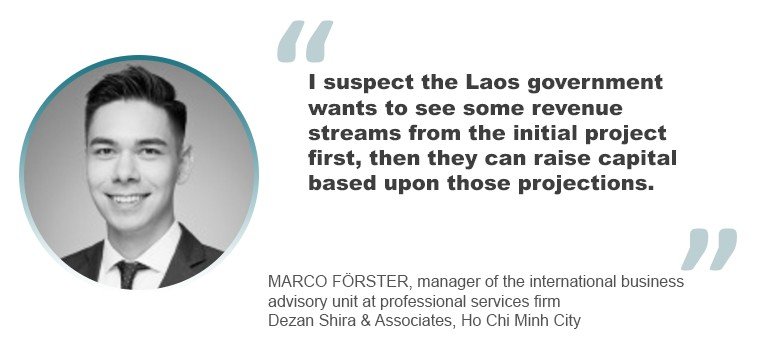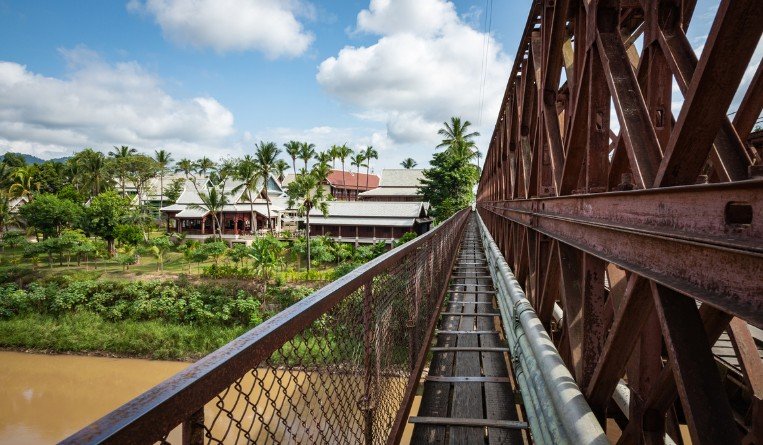Development of what is now being called the Laos-China Economic Corridor is proceeding as the Kunming-Vientiane rail link it will be based on nears completion.
The line will reconnect China and Southeast Asia by rail through a 414-km railway line stretching from Boten, on Laos’ northern border with China, to Vientiane, the Laotian capital. There are 170 bridges, 72 tunnels and 21 stations in Laos along the rail line.
“We are focusing on railway development, especially the construction of four major rail stations that will become the hubs of new modern towns. These towns will be connected to industrial parks and agricultural production zones in 10 provinces through the improvement of roads,” Deputy Prime Minister and Minister of Planning and Investment Sonexay Siphandone, told the National Assembly of Laos recently.
Three sizeable new towns will be built. The first will be in China with the second between Luang Prabang and Oudomxay provinces. The third will be in Vientiane, in the Saysettha Development Zone. Authorities plan to improve Road No. 2 and other logistics routes in Oudomxay Province to connect production sites to the railway and expressway in a bid to attract more trade and investment to the corridor.
This is a big step up for Laos, as well as a sign that China’s Belt and Road Initiative is moving on – and that long-needed rail connections in Southeast Asia are being built.
“China is building a new development paradigm. It will bring Laos more development opportunities. Both sides need to accelerate the construction of the China-Laos Economic Corridor, foster new driving forces for high-quality Belt and Road cooperation and facilitate the completion of the China-Laos Railway on schedule to make it a flagship project of friendship and cooperation,” Chinese Foreign Minister Yi Wang said at a February meeting with Foreign Minister of Laos Saleumxay Kommasith.
This has big implications for the region, and for moving cargo.
Top is the Kunming-Vientiane railway, which will connect with a rail line on to Bangkok, and then head south down the Malay peninsula to Singapore.
“The US$6 billion project is expected to be completed in December of this year,” Marco Förster, manager of the international business advisory unit at professional services firm Dezan Shira & Associates in Ho Chi Minh City told Asia Cargo News.
Some parts of the rail line, such as Kunming to Mohan on China’s border with Laos, are already in service, despite delays due to Covid-19.
“The pandemic has nevertheless impacted the progress of the construction: the Chinese engineering company is lacking workers and must cope with a shortage of equipment,” Dezan Shira & Associates wrote in a release about the link. “Still, the project is reaching 90% of its progression.”
Exactly how much cargo the line will move is also to be resolved but, it is shaping up to be significant. “There has been no specific mention of how much has been ‘allocated’ for cargo, but the railway is built on China’s GB standard Grade 1, which is suitable for 120km/h freight trains and 160km/h passenger trains,” Förster added.
The project is on the World Bank’s radar, for the modal shift it is expected to have from maritime trade to trade by rail.
“Currently, trade flows between China and ASEAN rely mainly on maritime routes, and trade between Laos and China represents less than 2% of total China-ASEAN trade. The transit trade through Laos along the railway corridor could reach an estimated 3.9 million tonnes per year by 2030, which would include a shift of an estimated 1.5 million tonnes of trade from maritime transport to the railway,” the Bank said in a report.
Behind this are plans for more extensive rail development in Laos.
The proposed Savannakhet-Lao Bảo railway would link Thailand with Vietnam through Laos. A Malaysian company, Giant Consolidated, is working on the project but did not return requests for information. All that could be gleaned from Giant’s outdated website was that the government of Laos, a shareholder in Giant Rail Company, wants to develop a comprehensive railway system in Savannakhet Province with 11 railway stations and 11 designated development zones (DDZs) with a total area of about 4,100 hectares.
The proposed 220 km line will run parallel to the Route 9 highway and cost an estimated US$5 billion.
The Vientiane-Vung Ang railway (A3 rail project) would link the capital of Laos with access to Vung Ang a port in Vietnam. This 550 km railway was agreed upon by Laos and Vietnam in May 2017, and in December 2017 a feasibility study concluded the project is feasible. The project is estimated to cost US$5 billion. Work is set to begin on the route later this year, although the pandemic and Vietnam’s interest in building a high-speed coastal rail link between Ho Chi Minh City and Hanoi might see it delayed.
Both are expensive projects for a small, poor, indebted country, so money will likely be a bigger problem. “I suspect the Laos government wants to see some revenue streams from the initial project first, then they can raise capital based upon those projections,” said Förster.

Other projects being considered are Thakhek, Laos-Vung Tau, Vietnam. “With a proposed railway going east from Thakhek towards Vietnam, the next phase would be to continue a railway south to Pakse. From Pakse, it would then go to Chong Mek on the Laos/Thai border. This could potentially be connected by a Thai Railway extension from Ubon Ratchathani,” Dezan Shira said. “The project has been considered but is not yet concrete. Construction has not started.”
Still under discussion is a proposed line from Pakse to Veun Kham on the Cambodian border. This would connect to a proposed line from the border to Phnom Penh.
There are a lot of plans and proposals circulating but, if successful, the Kunming-Vientiane link might catalyze a much more extensive Laos rail network, one which would ease one of Southeast Asia’s major infrastructure problems.
Michael Mackey



